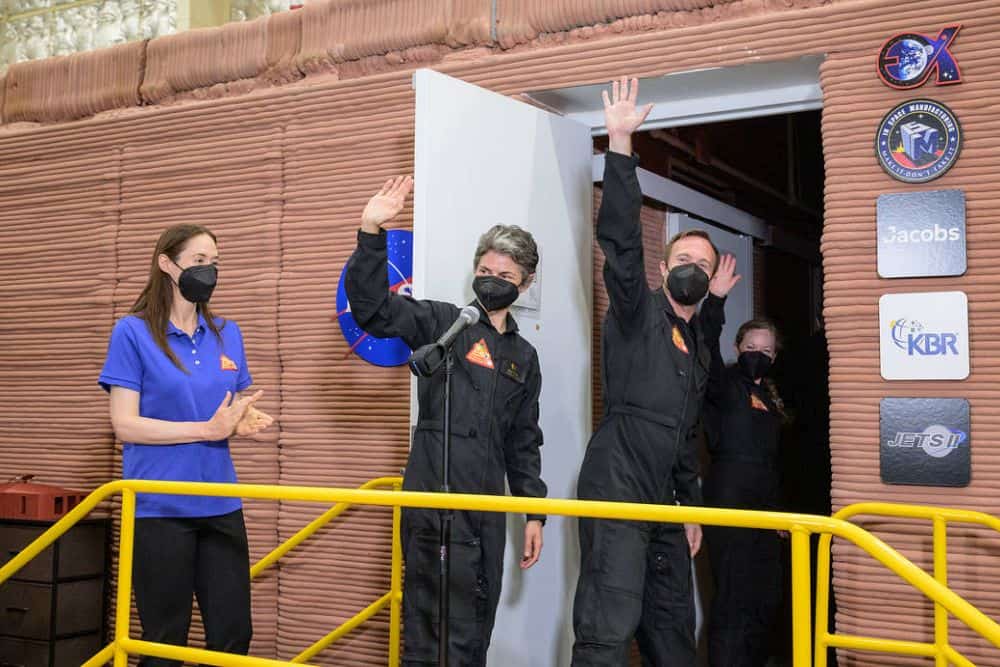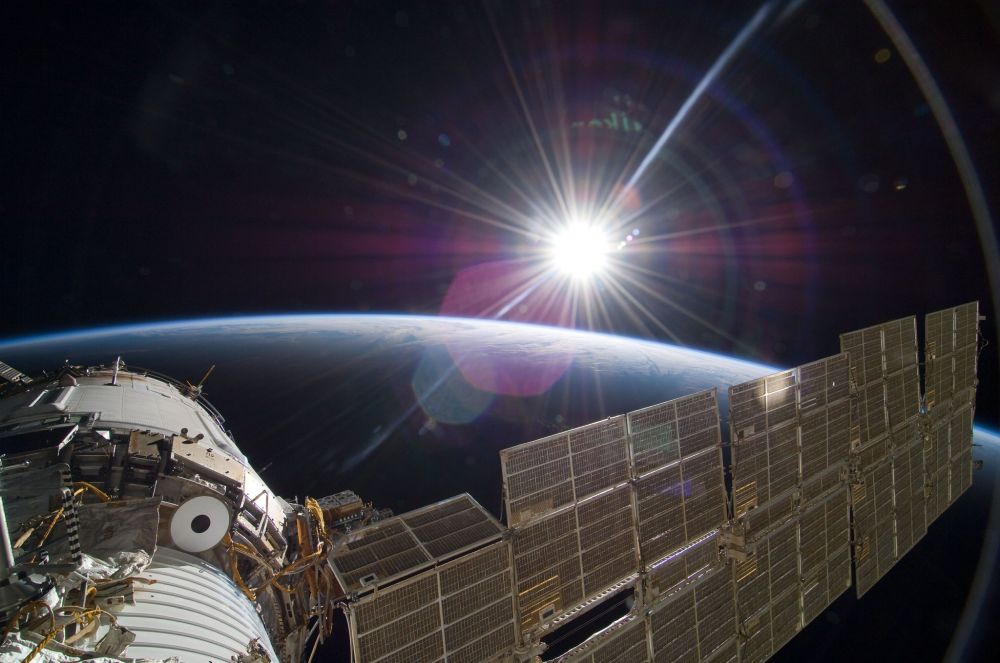
[Image above] The four paid volunteers taking part in NASA’s first year-long simulated Mars surface mission enter the 3D-printed concrete habitat on June 25, 2023. Credit: NASA
If we are to one day conduct a crewed mission to Mars, it will take faith, trust—and a whole lot of materials science.
Researchers have achieved numerous materials breakthroughs in recent years that will make crewed Mars missions feasible, such as securing a breathable air supply and constructing sturdy habitats.
But materials are not the only challenge to carrying out a successful mission. We also need to anticipate the toll that long-duration space missions will have on a crew’s cognitive and physical performance.
To anticipate these effects, space agencies conduct special field tests called analog missions. These tests, which are carried out in locations that have physical similarities to the extreme space environments, aim to identify possible safeguards to the hazards of life in space.
These hazards include behavioral and cognitive challenges caused by the extreme isolation and confinement in space habitats, such as a decline in interpersonal interaction, sleep disorders, depression, and boredom.
On June 25, 2023, NASA commenced its first year-long analog mission to simulate living on Mars.
The Crew Health and Performance Exploration Analog, or CHAPEA, is the first of three planned one-year simulated Mars surface missions. These missions, which will take place at the agency’s Johnson Space Center in Houston, Texas, involve crew members living and working in a 3D-printed, 1,700-square-foot habitat.
Mars Habitat Tour 📹
— NASA_SLS (@NASA_SLS) April 22, 2023
CHAPEA, or Crew Health and Performance Exploration Analog, is @NASA's first one-year ground-based mission that will simulate living on @NASAMars. The crew will live and work in this 3D-printed, 1,700-square-foot habitat.
MORE: https://t.co/aA6dSIRWLG pic.twitter.com/fgiznfV0uU
Credit: NASA, Twitter
Austin, Texas-based construction company ICON constructed the 3D-printed concrete habitat for this mission. The company is known for its 3D-printed homes, which are used to help address the affordable housing crisis. (See this 2020 CTT on ICON’s planned 3D-printed community in Tabasco, Mexico.)
There is also a 1,200-square-foot area called the “sandbox” attached to the habitat. It is filled with red-dyed sand to mimic Mars’ surface during simulated spacewalks.
The four paid volunteers taking place in this first mission include a biologist, structural engineer, physician, and U.S. Navy microbiologist. They will remain continuously within the enclosed habitat and sandbox until the mission ends on July 7, 2024.
Author
Lisa McDonald
CTT Categories
- Aeronautics & Space


